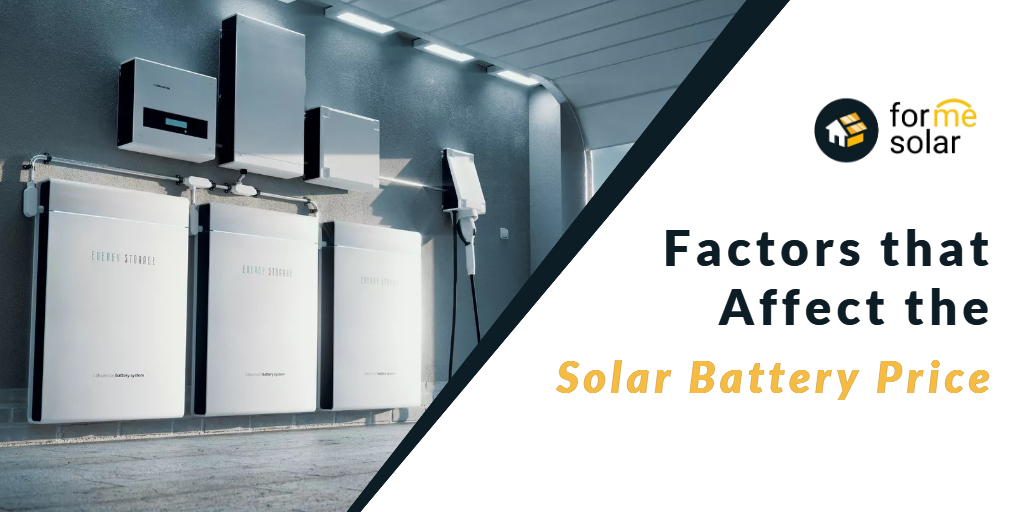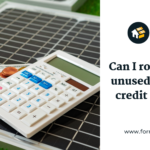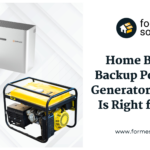
Factors that Affect the Solar Battery Price
In particular for resilience against grid interruptions, solar batteries can greatly raise the value of a solar system for homes. The cost of solar batteries might differ wildly because there are several solutions available on the market today. Therefore, it is important to outline a few important factors that affect solar battery pricing.
Battery Capacity
The capacity of a solar battery, or the total amount of energy it can store, has the greatest impact on its cost. Home batteries may typically hold between 10 and 20 kWh of electricity. The length of time a solar battery lasts during an outage depends on a number of factors, such as how much power your home uses from it and the size of the solar system that is connected to it. However, on the most fundamental level, the more battery capacity you have, the longer you'll have power during an outage.
If the Battery is DC vs AC
Since DC batteries are simpler than AC batteries, they are typically less expensive. However, DC batteries are considerably less adaptable than AC batteries, and depending on the solar equipment the battery is linked with, a DC battery may not even be a possibility. Meanwhile, any available solar system can be used with AC batteries, including Tesla Powerwall.
Balance of System (BOS) Equipment
The process of installing a solar battery involves more than just mounting the battery to the wall and connecting it to the main electrical grid. In order for house batteries to operate effectively, other vital pieces of machinery are needed.
If a Backup Gateway is Required
The backup gateway is a tool that monitors for power outages and, when one is found, disconnects the house from the electricity system. It resembles a transfer switch for a generator in that regard. This is essential for the solar battery to offer backup power without feeding power back into the grid.
Critical Loads Panel
The majority of solar batteries are capable of supporting circuits up to 30 amps. As a result, most battery systems just back up the circuits that the homeowner values the most rather than the entire house. Therefore, even if the battery would not be able to support a central air conditioning unit, it would undoubtedly be able to power the basics like a refrigerator, lighting, outlets for charging portable gadgets, etc.
Because of this, installing a solar battery typically requires installing a sub-panel, sometimes known as a "critical loads panel," that houses the crucial circuits that will be backed up in an outage.
In the event of a power outage, the backup gateway disconnects the house from the grid and redirects the battery's supply to the main electrical panel's important loads panel rather than the entire panel. The homeowners won't even notice their lights flicker during this brief switchover!
Even the highest-amperage, most energy-intensive uses in the home require sufficient battery power, therefore whole-home backups with batteries are feasible but will require multiple batteries. Because of this, most homeowners choose a critical load backup to avoid paying for additional batteries. Batteries can still be a good alternative for individuals who need to back up their entire house.
Cost of Labor
After investing thousands of dollars in a solar battery, it is essential to check that it is placed correctly, has all the necessary permits and compliances, and will perform as intended for its entire lifespan. Therefore, it's crucial to have the batteries installed by a business with system experience. Anything worth doing should be done correctly!
Miscellaneous
Aside from these essential parts, there is supplementary equipment like battery mounts, conduits, and disconnect switches.
Incentives that Offset the Cost of Batteries
A solar battery system's price is significantly influenced by incentives as well. The 30% federal tax credit is the incentive that is most widely offered. The 30% federal tax credit is the incentive that is most widely offered. Solar-powered systems are also eligible for this credit. But starting in 2023, the battery doesn't have to be linked to solar in order to be eligible for the tax credit.
Another extremely well-liked incentive program for solar batteries is California's SGIP program. The SGIP will help to further lower the cost of the system if it is applicable, but certain requirements must be completed in order to qualify for it.
Other Factors that Affect Energy Storage Cost
The equipment you install, the electrical work necessary for your installation, and even where you find your installer all play a role in how much your energy storage system will cost.
The equipment itself could be the most determining factor in the price of a battery installation. Consider the type of battery you're installing and how many you'll need, the chemistry it uses to store energy, and whether or not it has an inverter of its own. While equipment expenses normally make up between 50 and 60 percent of the cost of an energy storage system, the actual installation, or the amount of electrical work needed and where you find your installer, also has a significant impact on the system's final price.
Battery's Quality
Similar to solar prices, the quality of the battery you choose should be your top priority when installing it. There may be variances in the overall quality of the energy storage systems, and you may expect to spend more for higher-quality items even though all storage solutions now on the market must pass strict safety testing criteria.
Number of batteries needed
Every storage installation is different, and every person has various storage demands. Storage system sizing often has less flexibility than solar panel systems. While it's simple to add or remove a single solar panel from a system design to adjust the installation's capacity, it might be challenging to adjust the size of the battery you install with the majority of available alternatives. As a result, the price of storage will vary greatly depending on how many batteries you put in and how many kilowatt-hours of energy you need to store.
Battery's Chemistry
In spite of the fact that there are a few various kinds of batteries that can be purchased for use in homes and businesses today, the most popular ones often use some variation of lithium-ion chemistry to store electricity. Lithium iron phosphate and nickel manganese cobalt (NMC) are the two most popular forms of lithium-ion batteries (LFP). NMC batteries tend to be more power dense, whereas LFP batteries tend to last longer. Because each chemistry has unique properties, the price of each chemistry varies.
Retrofit vs. new solar & storage
Installations involving energy storage demand a sizable quantity of electrical work and a sizable amount of your installer's time. Because all of the electrical work can be completed at once and your installer won't need to make multiple trips, installing storage alongside solar will result in some time and money savings.
Overall Impacts to Battery Price
In conclusion, there's a wide range of factors that impact the price of solar batteries. The final cost of the system to the homeowner will depend on a number of factors, including battery capacity, battery type, the balance of system equipment, installation, and incentives. Contact one of our Energy Advisors right now to set up a consultation if you have any specific inquiries about the cost of solar batteries.















